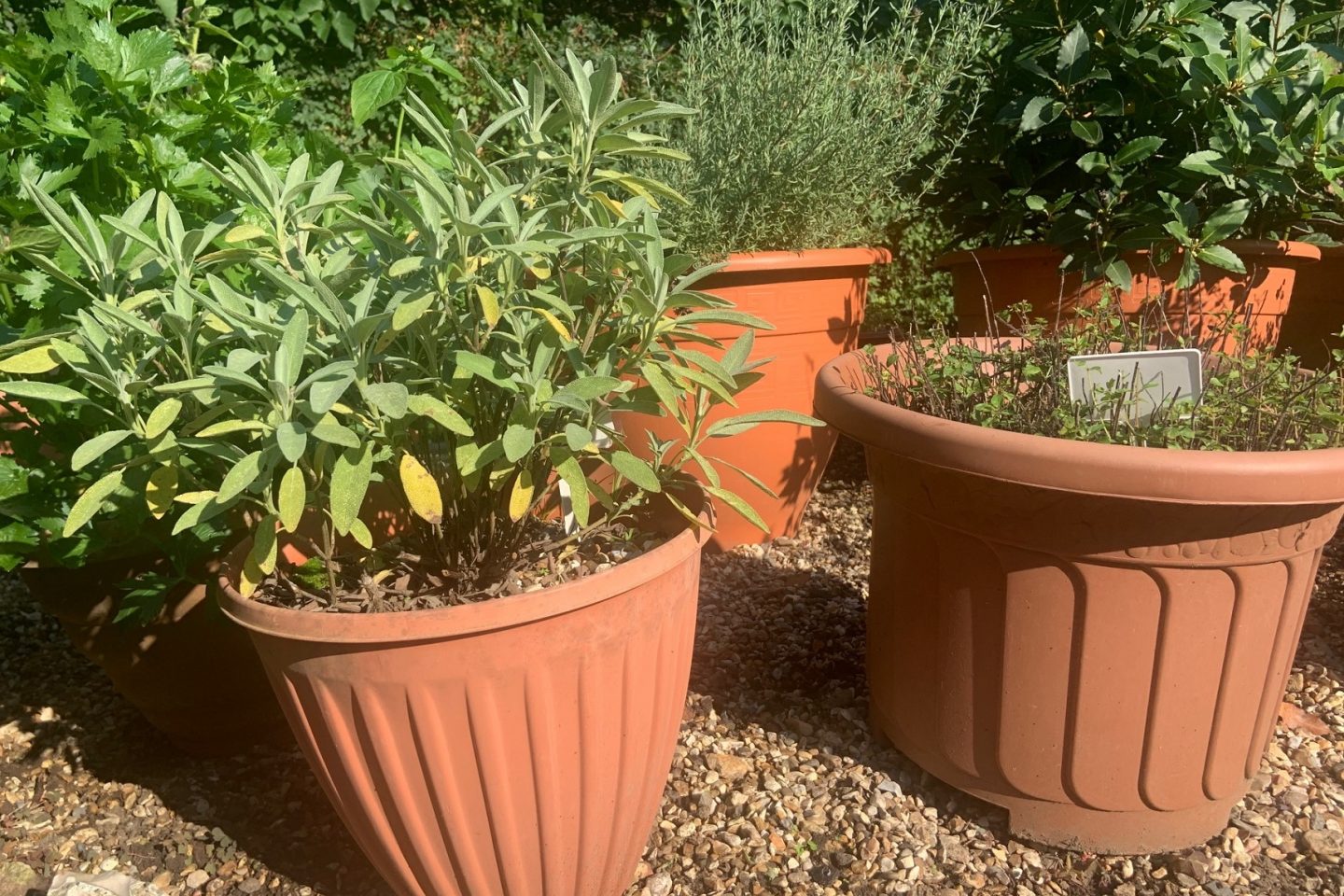Helpful information
Timing: All year around (you may prefer to take a rest in winter!)
Where to do it: Outdoors, indoors
Garden space: Small garden, large garden, balcony, indoors

Timing: All year around (you may prefer to take a rest in winter!)
Where to do it: Outdoors, indoors
Garden space: Small garden, large garden, balcony, indoors

There are many good reasons to grow plants in containers. Many gardeners have a mixture of plants in the ground and in pots.
Container gardening is good because:

The good news is there are almost no limits to what counts as a container!
You could …
Find what works best for you. If you have difficult bending, a container raised well off the ground might suit you. Or you could use long-handled tools to help reach containers that are lower to the ground.
Another option is to grow in raised beds. Many raised beds do not have a bottom and sit on the soil. This makes them slightly different to a container. Some raised beds do have a bottom, even if that's just some weed fabric. So, you could argue they are a type of big container.

Always choose frost-proof pots, so they don’t crack during cold winter months outside. Clay / terracotta pots and containers dry out faster than plastic ones. Water them more frequently, particularly in summer.

There are some important steps to take when growing plants in containers.
1. Match pot to plants. There should be enough space in your container for your plant’s roots to grow. Generally, a plant’s roots are roughly the same size as the plant itself in height and width.
2. Check for drainage holes. Containers are basically just big buckets. If there is no way for water to escape, your plant will get waterlogged (too wet) with a risk it could die. Make sure your container has enough holes in the bottom so water can drain away.
3. Line the bottom. To improve drainage, put a layer of stones or broken pieces of old clay pots (crocks) at the bottom. If you will need to move your container, you could use sticks instead, as they are much lighter.
4. Add compost. Choose a good quality multi-purpose compost. Using a scoop or smaller pot, fill your container with it. Remove / break apart any large lumps. You may want to fill the container to the top edge then water it so the compost settles down. If you do this, you may need to top up the compost level again after watering.
5. Place plants. Position your plants where you want them in the container, still in their pots.
6. Plant and fill. Carefully remove the plants from their pots, put back in position and fill around them with more compost. Water well after planting.
There are plenty of ways to make container gardening more comfortable and less energy to do.
Because there are so many different types of container available, there are almost no end of possible plants you could grow. What do you like the best? The chances are, it will be suitable to grow in a container!
You can even grow small trees in containers, like dwarf Japanese maples or magnolia.
Here are some ideas to get you started. It's often a question of experimenting and seeing what does best in which container and where.
Planting annuals in containers

Annuals are plants that live for one year only. A container filled with annuals can give you a glorious explosion of colour. You will need to replant them each year – a chance to try out new combinations!
Plants to try: petunias, zinnias, sunflowers, lobelia, marigolds, calibrachoa (million bells)
Planting alpines in containers

Alpine plants are ones that originally grew in mountain areas. There is an amazing variety to choose from, with incredible shapes and textures. Some alpine plants will survive outside through winter.
Plants to try: dianthus, saxifrage, sedum
Alpine plants don’t like being too wet. You might want to mix some sand, grit or perlite with your compost to help speed water away from them. Put a thin layer of gardening grit or gravel on top of the compost to control weeds – it looks great too.